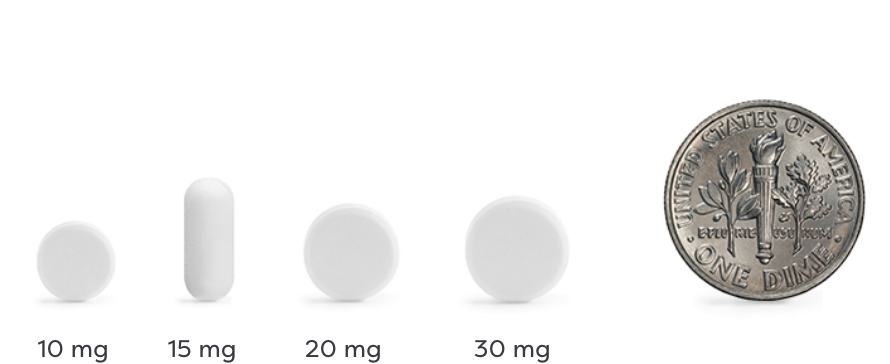Lower Costs Within Reach
Mirum Access Plus works closely with your doctor and insurance plan to help facilitate coverage for LIVMARLI.
The only ileal bile acid transporter (IBAT) inhibitor available as a tablet or a liquid (oral solution) medicine.
LIVMARLI is the only IBAT inhibitor available as a liquid medicine or a tablet. Both LIVMARLI tablets and liquid medicine are taken by mouth.
Take directly from the required measuring device delivered with your medicine.
LIVMARLI bottle and measuring device not actual size.
Tablets come in 4 fixed doses:

Tablets and dime not actual size. Dime shown for scale.
Both LIVMARLI oral solution and tablets should be taken once daily at the dosage prescribed. Take LIVMARLI 30 minutes before a meal in the morning
Dosing information:
What happens if a dose is missed?
When starting a medication, it’s important to talk to your doctor or your child's doctor so they can help you better understand what to expect.
Don’t stop or change the dose on your own without talking to your doctor first.

Mirum Access Plus works closely with your doctor and insurance plan to help facilitate coverage for LIVMARLI.
Learn about the results of LIVMARLI in patients with cholestatic pruritus in Alagille syndrome.
LIVMARLI is a prescription medicine used to treat cholestatic pruritus (itch) in patients who are 3 months of age and older with Alagille syndrome.
It is not known if LIVMARLI is safe and effective in children with Alagille syndrome who are under 3 months of age. It is not known if LIVMARLI is safe and effective in adults who are 65 years of age and older.
What are the possible side effects
of LIVMARLI?
LIVMARLI can cause serious side effects, including:
Tell your health care provider about all medicines that you take, as LIVMARLI may interact with other medicines. If you take a medicine that lowers cholesterol by binding bile acids, such as cholestyramine, colesevelam, or colestipol, take LIVMARLI at least 4 hours before or 4 hours after you take that medicine.
Your health care provider may change your dose, or temporarily or permanently stop treatment if you have certain side effects.
LIVMARLI is available in oral solution and tablet formulations. LIVMARLI is taken by mouth, 1 time each day, 30 minutes before a meal in the morning. For the oral solution, be sure to use the provided oral dosing dispenser to accurately measure the dose of medicine.
These are not all of the possible side effects of LIVMARLI. For more information, ask your health care provider or pharmacist. Call your doctor for medical advice about side effects. You may report side effects to the FDA at 1-800-FDA-1088.
Please see full Prescribing Information, including Patient Information and Instructions for Use, for LIVMARLI.